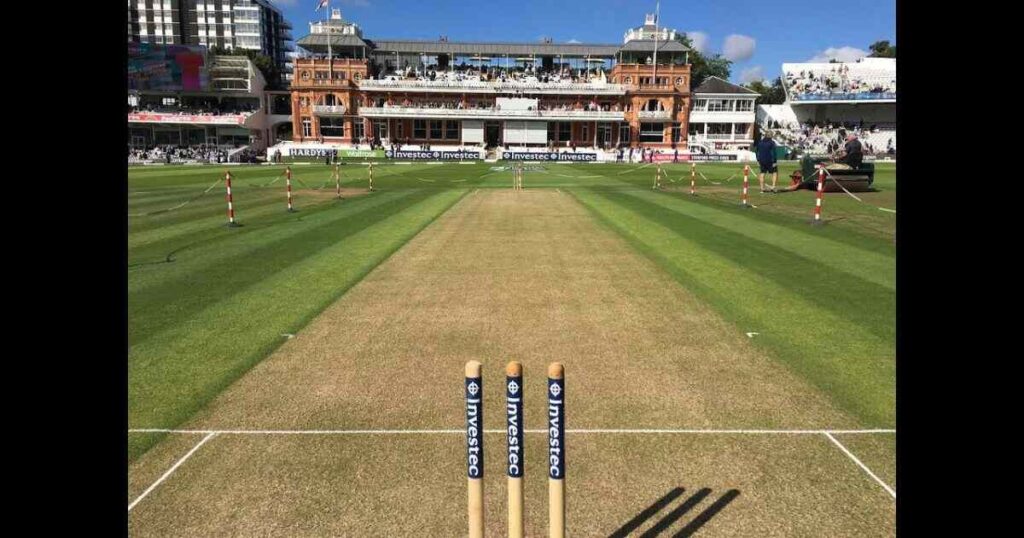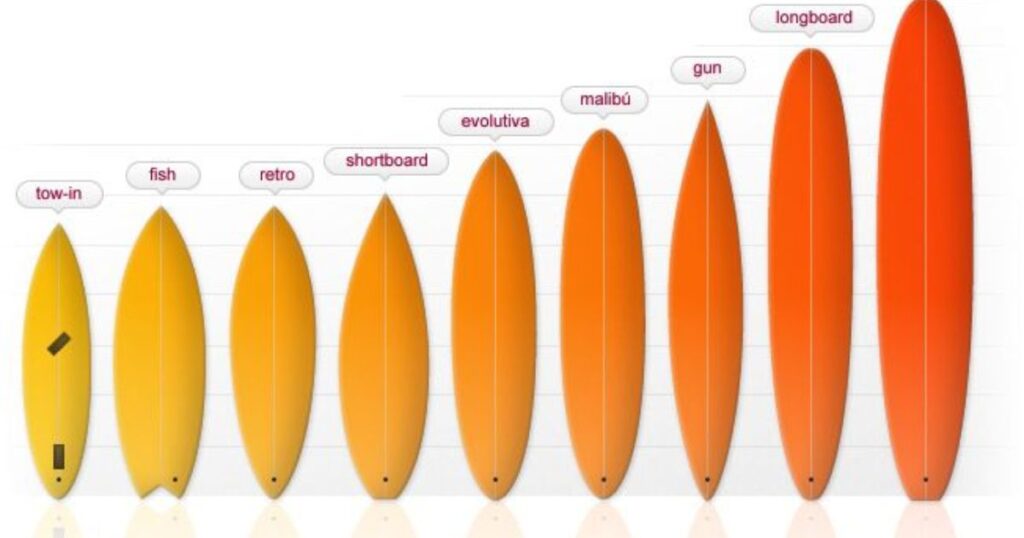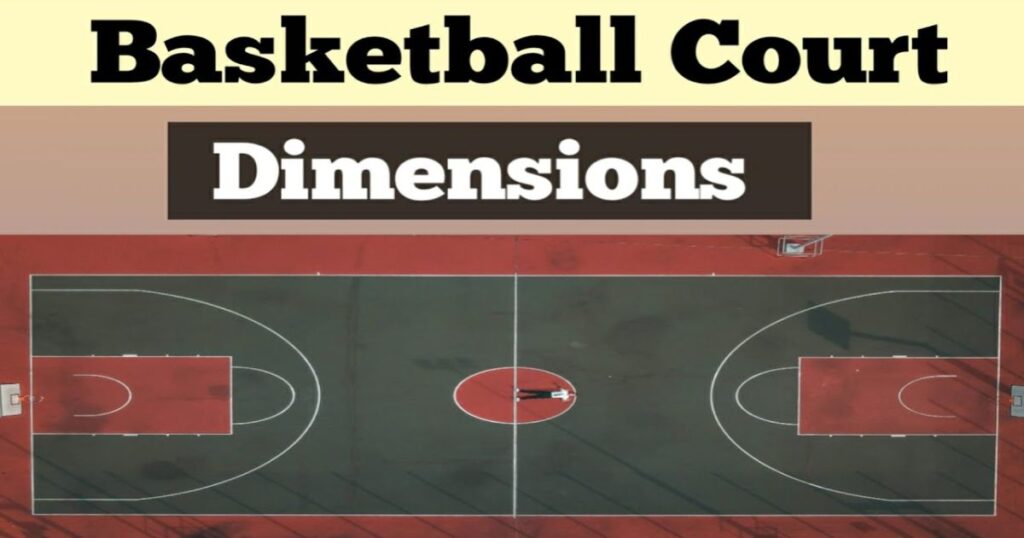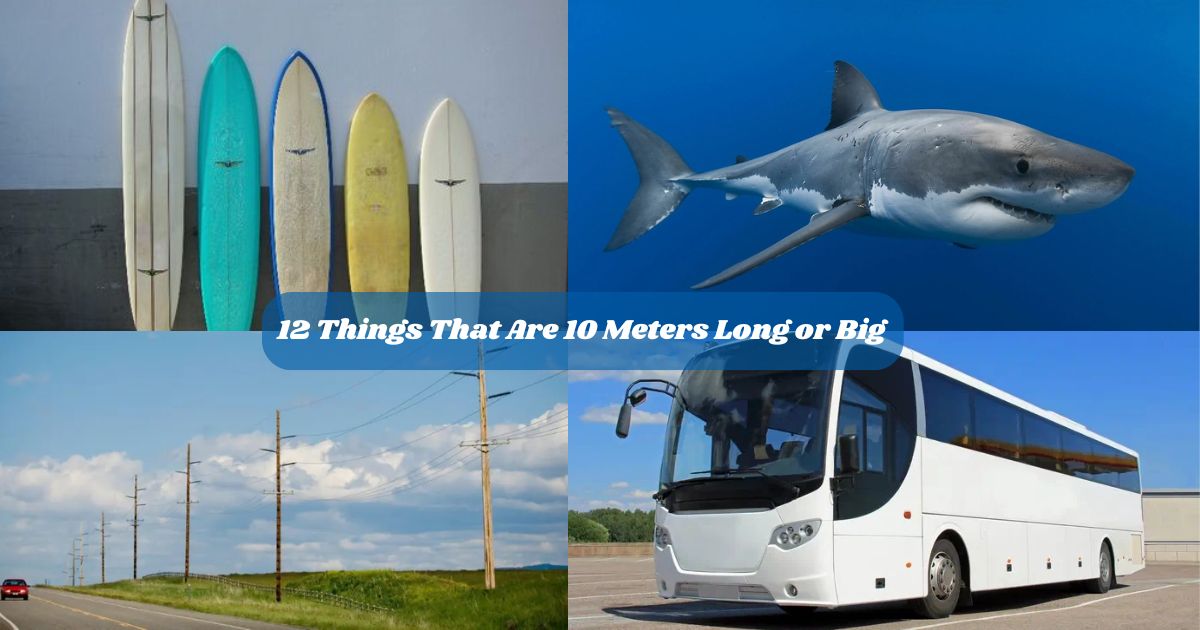When you hear “10 meters,” it might sound like just another number. But until you compare it with everyday objects, it’s hard to picture what that distance really looks like. Whether you think in feet, steps, or familiar things around you, 10 meters can feel very different depending on the situation.
In simple terms, 10 meters equals 1,000 centimeters or about 32.8 feet. That’s longer than two cars parked back-to-back and close to the height of a three-story building. To make it easier, we’ll break down 10 meters into real-life comparisons, from buses and telephone poles to sports fields and even famous landmarks.
By the end, you’ll be able to clearly visualize how long 10 meters is and use that understanding in daily life, whether for sports, travel, or just satisfying your curiosity.
How Long is 10 Meters?
Ten meters might sound like a simple measurement, but it becomes much easier to picture when you break it down. In numbers, 10 meters equals 1,000 centimeters or about 32.8 feet. That’s close to 11 yards, which is a little longer than the width of a small house or the length of two average-sized cars parked one after the other.
In everyday life, 10 meters isn’t extremely long, but it’s not short either, it sits in that middle ground where you can see and measure it without special tools, yet it’s still a noticeable distance. Think of it as the space you’d cover with about ten big steps, or the height of a standard Olympic diving platform. These simple comparisons make it easier to imagine how long 10 meters truly is.
How Far is 10 Meters?
When you think about distance, 10 meters can feel different depending on the situation. For example, if you’re walking, 10 meters is roughly ten big steps for an average adult. In sports, it’s about the distance of a short sprint or the run-up before a jump, which shows that 10 meters is far enough to notice but still easy to cover in a few seconds.
To put it into perspective, 10 meters equals around 33 feet. That’s about the same as crossing a small neighborhood street or walking the width of a large room. It isn’t a huge distance, but it’s long enough that you can clearly see the space it covers without needing a tape measure.
Understanding 10 Meters in Simple Terms
The easiest way to understand 10 meters is to compare it with units we use every day. Ten meters equals 1,000 centimeters, 10,000 millimeters, or about 32.8 feet. If you think in yards, that’s just under 11 yards. These conversions help, but numbers alone don’t always give a clear picture of the distance.
That’s why it helps to imagine 10 meters in real-life situations. Picture a bus on the road — many are about 10 to 12 meters long. Or think of three floors stacked on top of each other in a building, which roughly reaches the same height. By connecting the number to familiar objects, 10 meters becomes much easier to visualize and remember.
10 Meters Compared to the Human
When you compare 10 meters to a human, the difference is easy to see. The average adult is around 1.7 to 1.8 meters tall, which means you would need about five to six people standing on top of each other to reach a height of 10 meters. In length, two cars or about six tall adults lying down head-to-toe would stretch close to the same distance.
In walking terms, most people cover about a meter with one large step. So if you take 10 big strides, you’ve moved roughly 10 meters forward. This makes it one of the easiest ways to picture the distance, no tools needed, just your own steps.
Now that we understand the scale, let’s look at 12 real-life examples that show just how long 10 meters really is.
A Telephone Pole

A standard telephone pole is a great way to picture 10 meters. Most utility poles you see along roads or streets range between 9 and 12 meters tall. That means a single pole is almost the exact same height as 10 meters, making it one of the closest real-life comparisons you can find.
When you look up at a pole carrying wires, you’re basically looking at the length of 10 meters stretched vertically. This makes it easy to imagine the measurement without converting numbers, just think of the tall poles standing along sidewalks and you have a clear picture of what 10 meters looks like.
10 Adult Steps

One of the simplest ways to measure 10 meters without any tools is by counting your steps. On average, a single adult step is close to one meter in length, especially when you take a big stride. That means if you walk forward with ten large steps, you’ll cover about 10 meters.
This method isn’t exact, since everyone’s stride length is a little different, but it’s close enough to give you a clear idea. It’s a practical trick people use in sports fields, classrooms, or even outdoors when they want to estimate 10 meters quickly without needing a tape measure.
As Tall as Five Refrigerators

To picture 10 meters, imagine stacking five standard refrigerators on top of each other. Most refrigerators stand between 5 to 6 feet tall (around 1.8 meters), so five of them combined would roughly equal 30 feet, which is very close to 10 meters (32.8 feet).
This comparison makes it easier to visualize because refrigerators are everyday household items we see regularly. Just think of lining them up vertically, and you’ll have a good sense of how tall 10 meters really is.
So, whether you measure it as 10 meters or about 33 feet, that’s the height of five refrigerators stacked together, taller than many single-story houses!
2x Great White Shark

The great white shark is one of the ocean’s largest predators, reaching an average length of 5 meters (16 feet). If you place two of them end to end, their combined length would be around 10 meters (32.8 feet). That’s the exact distance we’re talking about.
Imagining two sharks side by side makes 10 meters easier to picture, especially since we usually see them in documentaries or aquariums as massive creatures on their own. Two of them together would stretch farther than most school buses.
So, 10 meters (about 33 feet) is like having two full-grown great white sharks lined up nose to tail, an impressive size that highlights just how long this distance really is.
Half a Cricket Pitch

A standard cricket pitch is 22 yards long, which equals about 20.12 meters (66 feet). If you cut that distance in half, you get almost exactly 10 meters (32.8 feet). So, standing at the halfway mark of a cricket pitch is the same as covering the full length we’re measuring.
For cricket lovers, this comparison makes 10 meters simple to picture. It’s the space between the bowling crease and roughly halfway down the pitch, a distance players often run during quick singles.
10 meters is essentially half a cricket pitch, short enough to run in a burst but long enough to visualize clearly when compared to the game’s most iconic field measurement.
Length of Four Surfboards

On average, a surfboard measures around 2.5 meters (8 feet) in length. If you place four surfboards end to end, you get about 10 meters (32.8 feet) in total. This makes surfboards a great everyday comparison for understanding the length.
Surfers often carry or line up boards on the beach, so imagining four of them connected gives a clear mental picture of how far 10 meters actually stretches. It’s a visual that feels both sporty and relatable.
So, whether you’re into surfing or not, picturing four full-sized surfboards laid out in a row is an easy way to grasp how long 10 meters really is.
A Bus

The average city bus is about 10 to 12 meters long (32 to 40 feet), which means a single bus gives you a near-perfect example of how long 10 meters actually is. Just imagine standing at the front of a bus and walking all the way to the back. That’s the distance we’re talking about.
This makes buses one of the easiest and most practical comparisons. If you’ve ever waited at a bus stop or stepped inside one, you’ve already seen what 10 meters looks like in real life.
Three-Story Building

A typical three-story building stands close to 10 meters (about 32 feet) tall, making it a great way to picture this length vertically. If you look at an apartment block, office, or school building with three levels, the total height from the ground to the roof is roughly the same as 10 meters.
This comparison helps because buildings are everywhere, and most people can visualize their height easily. Next time you pass by a small three-story structure, you’ll know you’re looking at something close to the true size of 10 meters.
The Width of a Basketball Court

A standard basketball court is about 15 meters (50 feet) wide, which means 10 meters would cover roughly two-thirds of the court’s width. If you stand on one side and walk toward the other, you’d notice that 10 meters gets you most of the way across, but not all the way.
This makes basketball courts a handy visual for understanding distance. Whether you’ve played the game or just watched it, picturing the width helps put 10 meters into perspective in a familiar and easy-to-grasp way.
As Tall as Four and a Half André the Giant

André the Giant, the legendary professional wrestler, was famous not only for his career but also for his enormous size. He stood at about 7 feet 4 inches (2.24 meters) tall, towering over almost everyone he met. His height makes him a great way to measure and imagine large distances.
If you lined up four and a half Andrés, one standing on top of the other, you’d get almost exactly 10 meters (around 32 feet). That means his incredible height stacked multiple times gives you a perfect example of just how long 10 meters really is.
This comparison is fun because it connects an unusual but memorable figure to a real-world measurement. Instead of just imagining a number, you can picture a giant human being multiplied several times, making 10 meters much easier to visualize.
Half of a Tennis Court

A standard tennis court is about 23.77 meters (78 feet) long, so half of it is roughly 11.8 meters (39 feet). That’s just a little longer than 10 meters, making half a tennis court a very close and practical comparison.
If you’ve ever watched or played tennis, imagine standing at the baseline and walking halfway across the court toward the other baseline. That distance is nearly the same as 10 meters, giving you a sporty and easy-to-visualize way to measure it.
A Typical Stretch Limo

A standard stretch limousine is usually around 9 to 10 meters (30 to 33 feet) long, which makes it almost the exact length you’re looking for. When you see one glide by on the road, its sleek body stretches close to the full distance of 10 meters.
This makes a limo one of the most accurate and stylish comparisons for this measurement. Just imagine walking alongside one from front to back, that’s essentially how long 10 meters really is in everyday life.
Practical Uses of Measuring 10 Meters
Knowing how long 10 meters (about 32 feet) is can be surprisingly useful in daily life. For example, athletes often train using 10-meter sprints to build speed and stamina, while swimmers practice 10-meter underwater distances to test endurance. In construction or interior design, understanding this measurement helps with spacing rooms, planning gardens, or estimating the size of driveways and yards.
It also comes in handy in safety and regulations. Parking spaces, fire lanes, and even social distancing guidelines in large gatherings sometimes use 10 meters as a benchmark. By having a clear picture of what 10 meters looks like, you can apply it confidently in sports, planning, and everyday problem-solving.
Read More : 14 Common Things That Are 40 Meters (m) Long/ Big
Conclusion
Understanding how long is 10 meter becomes much easier when we connect it to everyday objects and real-life examples. From the size of a bus and the width of a basketball court to the height of a three-story building, these comparisons turn an abstract measurement into something you can easily picture.
Whether you think of it in sports, buildings, vehicles, or even famous figures like André the Giant, 10 meters (about 32 feet) is a distance that shows up more often than you might expect. By relating it to familiar things, you’ll never have to guess again, you’ll always have a clear image of just how long 10 meters really is.

Hi, I’m Tony — a passionate blogger with over 3 years of experience in writing informative and accurate content. I specialize in sharing practical insights on sizes, measurements, and spatial guides to help readers make confident decisions. Through DimensionsPoint.com, I aim to simplify complex data into easy-to-understand content that’s reliable, useful, and SEO-friendly.
When I’m not writing, I’m researching the latest trends in measurement standards and user needs to keep my content relevant and up to date.

